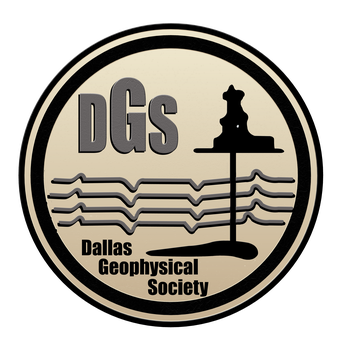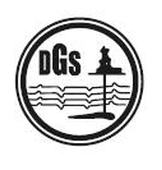May Technical Talk and Happy Hour- Dr. Paul R. Clarke & Matthew D. McChesney "Seismic-driven Appraisal Program Unlocks Gas-Condensate Play in Southern Hungary"
Event Details
Please join us on May 14th for the DGS May Technical Talk and Happy hour!
Logistics:
Location address: Lincoln Center L3, Suite 800- 5430 Lyndon B Johnson Fwy, Dallas, TX 75240. Event to be held at S&P Global's Office in the Lonestar Conference room. A member of the DGS will be by the Security desk in the main lobby to take you up to the 8th floor. Happy Hour to follow.
ABSTRACT:
This presentation reviews CanCambria’s pre-drill appraisal program of its tight-gas sand asset in the Kiskunhalas Trough, southern Hungary, leveraging newly acquired bespoke 3D seismic data and a re-evaluation of legacy wells. The Pannonian super-basin of central Europe has produced over 10 billion barrels of oil equivalent from multiple conventional objectives. Significant gas/condensate resource potential remains in the under-explored, high-temperature, high-pressure Neogene basins of southern Hungary, much of which is unconventional.
The Kiskunhalas Trough is a medium-sized, strike-slip sub-basin within the Pannonian back-arc system. Structurally complex, with highly discontinuous reservoir units, the basin hosts multiple stacked, low-permeability reservoirs reaching a gross thickness of 1,150 m at depths exceeding 2.5 km. Legacy wells confirm an active petroleum system with proven play elements. The syn-rift early Miocene interval includes both source and reservoir units, with combination traps and a 2,000 m gas column. A thick post-rift section thermally matured the system before Alpine inversion uplifted the section to favourable drilling depths without loss of overpressure.
Predicting reservoir distribution and quality remains the key technical challenge due to the variability imposed by the depositional system. Primary targets include basin-floor fans and reworked submarine channels, with secondary targets comprising gravity-driven flows and debrites. The sub-basin is heavily faulted, with reservoir bodies typically adjacent to and downthrown from high-angle fault strands, often originating at relay ramp junctions.
To address these challenges, a new high-fold, broadband, full-azimuth, long-offset 3D seismic survey was acquired and processed specifically to image the Miocene section. The new data dramatically improve resolution over legacy 2D and 3D datasets, enabling confident interpretation of structural and stratigraphic elements. Depth migration resolves critical fault geometries, while logs and core inform a deterministic pre-stack inversion. Inversion results yield relative volumes of acoustic impedance, shear impedance, and density. Poisson’s ratio and Young’s modulus were computed in post-inversion analysis to support lithology differentiation and highlight zones of elevated porosity and gas saturation.
A suite of seismic attributes—including PrSDM-based RMS velocity, average energy, sweetness, and dip-steered semblance—was integrated with the inversion products and analysed via unsupervised machine learning. Given the complexity of the sub-basin and limited well control, a cascaded k-means clustering approach was selected. The clustering results delineated facies and informed the extraction of geobodies corresponding to prospective sand-prone intervals. These geobodies were used to map reservoir fairways and reduce uncertainty in lateral continuity and quality across the basin.
Our new, integrated tectono-stratigraphic evolution and geophysical model for the Kiskunhalas Trough, provides a significantly enhanced characterization and image of the syn-rift succession. The workflow supports identification of multiple sweet spots within the field, important for both well selection and resource estimation. The methodology may be applied to analogous syn-rift basins globally, enabling improved appraisal success and reduced subsurface risk.
Speaker Bios:
Dr. Paul R. Clarke, B.Sc., Ph.D., FGS.
President & CEO - CanCambria Energy Corp. (TSXV: CCEC)
Dr. Clarke joined CanCambria in 2022 as VP of Exploration and has 25 years of experience in the oil and gas industry. One of the E&P industry’s leading unconventional experts, a “blue-ribbon” oil and gas finder and developer. Dr. Clarke has deep technical and broad operational proficiency, leading complex teams and having held roles of increasing responsibility with large-cap U.S. independents. At the forefront of several major onshore exploration, appraisal, and development programs. Operated assets include the Eagle Ford and Spraberry/Wolfcamp trends, executing over 1,000 horizontal wells (with NYSE: PXD), and the giant Pinedale Field with Ultra Petroleum (Ultra Petroleum). Dr. Clarke has a passion for identifying opportunities and value-creation via the drill-bit. As a practical technical leader, his strengths include creativity and problem-solving. His track record is defined by practical, analytical, and strategic decision-making, also working with a sense of urgency. Dr. Clarke holds a 1st Class Hons degree in Geoscience and PhD. In Petroleum Geology from the University of Birmingham, UK.
Matthew D. McChesney, B.Sc., M.Sc.
Chief Scientific Officer – Mobius Earth Sciences, LLC
Matt McChesney is a recognised thought leader in geophysics and subsurface asset management, with nearly 20 years of international experience in the energy industry. He has led multidisciplinary teams in the full geophysical data lifecycle—from acquisition through interpretation—delivering high-resolution subsurface models to support exploration, appraisal, and carbon storage decisions.
As founder and Chief Scientific Officer of Mobius Earth Sciences, Matt has advised on major asset development programs and contributed to strategic initiatives across conventional, unconventional, and low-carbon domains. His leadership has spanned technical innovation, cross-disciplinary integration, and operational optimisation, with a consistent focus on value creation and risk reduction.
Matt holds dual Bachelor of Science degrees in Physics and Mathematics from the University of Mississippi and a Master of Science in Geosciences from the University of Texas at Dallas.

When
Location
- Lincoln Center L3, Suite 800- 5430 Lyndon B Johnson Fwy, Dallas, TX 75240





